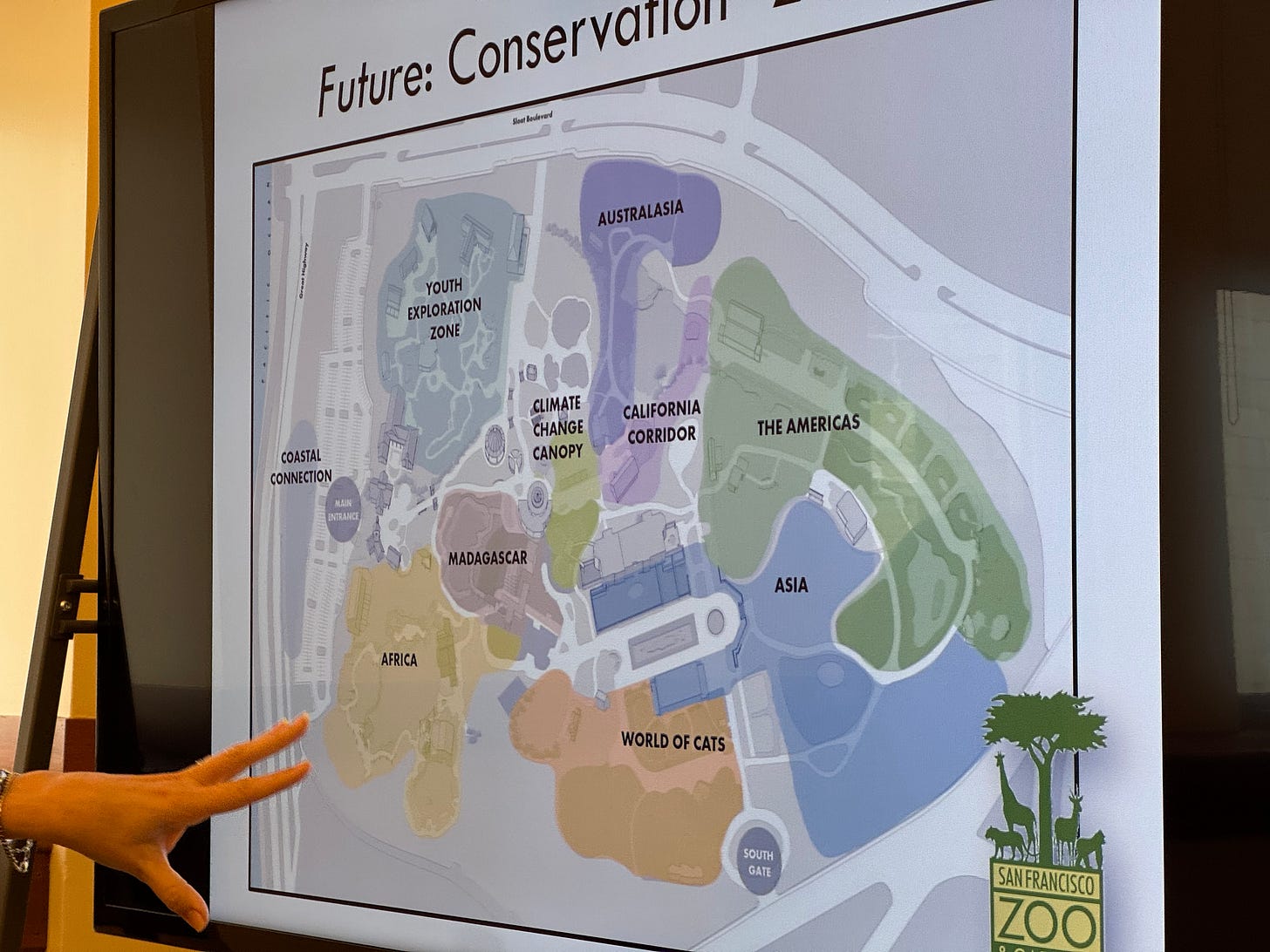San Francisco Zoo: No Vision, No Future Under Current Leadership
How Toronto, Denver, and Oakland Zoos Are Evolving While San Francisco Zoo Decays in Place

In the heart of some of North America’s most dynamic cities, zoos aren’t just places to see animals—they’re hubs of conservation, education, and innovation. The Toronto Zoo, Denver Zoo, and Oakland Zoo are leading the way, each with bold, future-focused master plans designed to make the most of their urban footprints while pushing the boundaries of what modern zoos can be.
And then there’s the San Francisco Zoo.
Despite its prime location in a city celebrated for progressiveness and environmental stewardship, the SF Zoo hasn’t had a meaningful master plan since 2004—a plan that, by most accounts, was never fully implemented. Under the leadership of Tanya Peterson, what’s been presented as a “master plan” is the map (see above) of the zoo—because apparently, labeling a map counts as strategic planning now.
But the problems don’t stop there. The SF Zoo isn’t just missing a master plan. It’s operating without a strategic plan, without 2-, 5-, or 10-year animal collection plans, and with no transparent decision-making process for determining which animals are housed—or why. This isn’t just a gap in paperwork; it’s a glaring failure in leadership, vision, and responsibility to the animals in their care.
Why Compare These Zoos?
All four are city-based zoos, grappling with the challenges of limited space, diverse urban audiences, and the urgent need for sustainability. But while Toronto, Denver, and Oakland have embraced these constraints as opportunities—reimagining their roles in urban conservation and community engagement—SF Zoo remains anchored in outdated practices and reactive management.
The difference? Planning. Vision. Accountability.
Toronto Zoo: Conservation with a Community Focus
Toronto’s 2022 Master Plan isn’t just about physical expansion; it’s about redefining the zoo’s role in a rapidly changing world. Rooted in extensive public consultation (including over 3,000 community responses), the plan emphasizes climate resilience, Indigenous partnerships, and the creation of immersive, naturalistic habitats. Toronto Zoo’s leadership understands that a zoo’s future isn’t in static exhibits—it’s in fostering connections between people, wildlife, and conservation science.
Denver Zoo: Innovation Through Inclusivity
Denver Zoo’s 2015 Facility Master Plan reflects over 10,000 hours of staff input and community feedback. It’s a living document that has guided transformative projects, from expansive habitats to integrated education programs that reach tens of thousands of students annually. Denver’s approach shows how a master plan can be both a strategic blueprint and a catalyst for continuous growth, with sustainability and animal welfare at its core. A prime example is the recently announced 570-acre Lembke Family Preserve, set to become a conservation center focused on breeding and reintroducing threatened species in Colorado and beyond
Oakland Zoo: A Century of Growth, A Future of Impact
Oakland Zoo’s strategic plan for 2023–2027 is unapologetically ambitious. Focused on animal welfare, community engagement, and global conservation partnerships, Oakland is setting new standards for what an urban zoo can achieve. Their phased approach—Engage & Align, Invest & Pilot, Build & Scale—ensures that growth is both sustainable and responsive to community needs. For comprehensive details on the Oakland Zoo's initiatives, including their strategic plans and impact reports, you can visit their dedicated page at issuu.com/oaklandzoo.
San Francisco Zoo: A Vision Deferred
In stark contrast, the SF Zoo operates without a coherent roadmap. This 2004 master plan map is a relic, gathering dust as new challenges—climate change, animal welfare standards, and public accountability—go unaddressed. There’s no strategic plan, no animal collection plan, and no long-term framework guiding decisions about the zoo’s future. Critical choices about which species are housed and how to align with global conservation priorities are made without transparency, accountability, or apparent rationale.
The Bottom Line
Toronto, Denver, and Oakland are proof that urban zoos can evolve—even thrive—when guided by bold strategy and inclusive master plans. Their successes aren’t just about flashy new exhibits; they’re about visionary leadership, community partnerships, and an unwavering commitment to conservation.
San Francisco Zoo’s stagnation isn’t inevitable. It’s a choice.
And it’s time for that to change.


